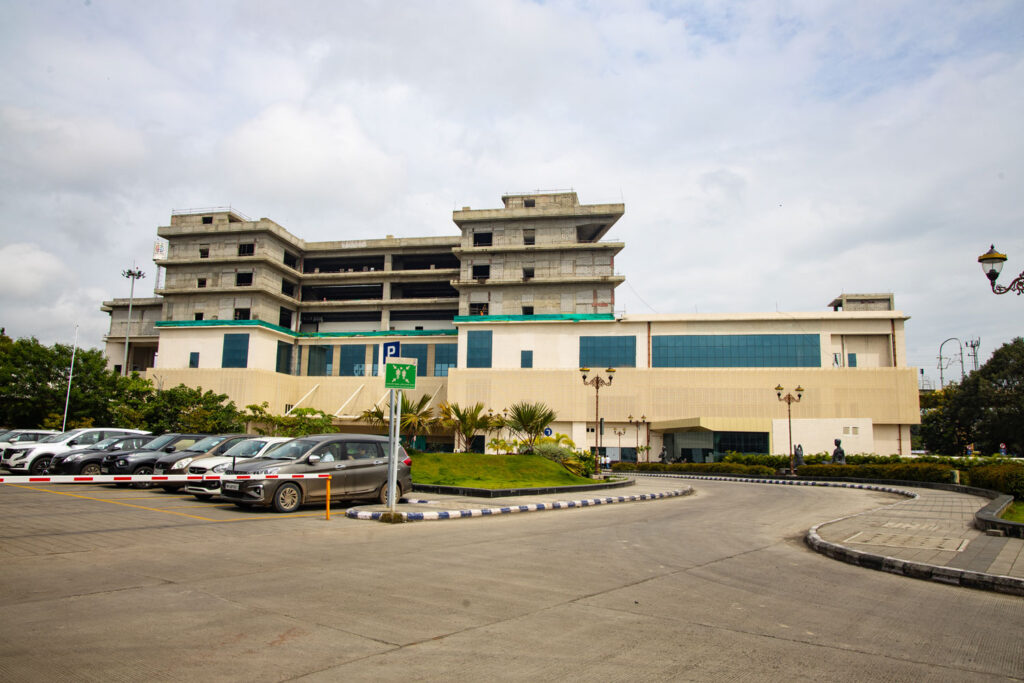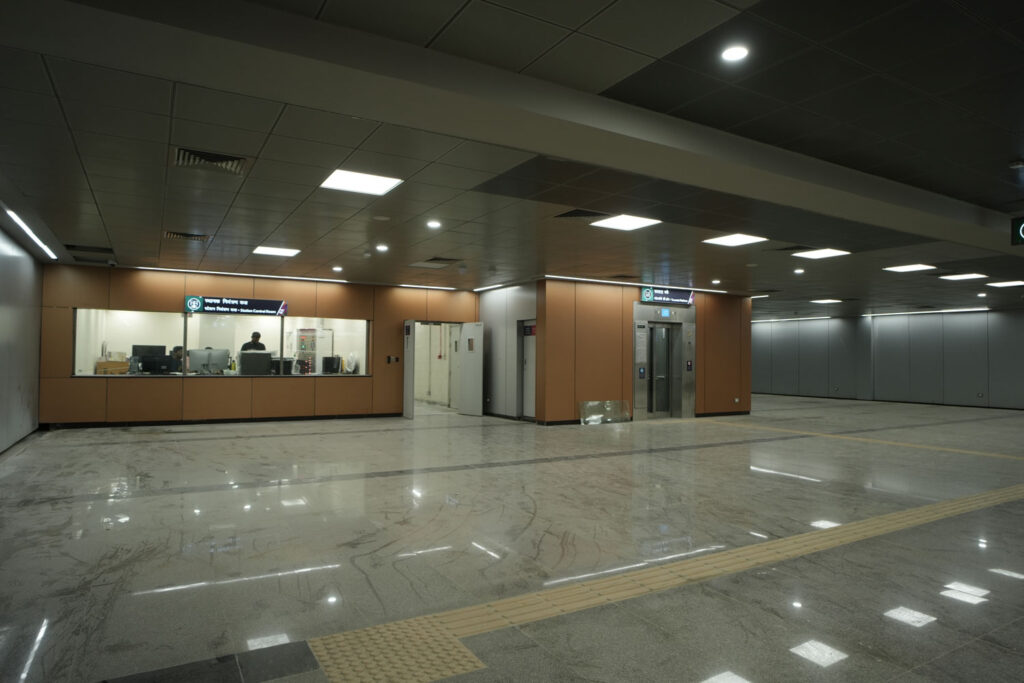The Most Awaited Underground Section of the Pune Metro: Shivaji Nagar to Swargate
The inauguration of Pune Metro’s underground section, connecting the District Court to Swargate, represents a landmark achievement in the city’s evolving transportation network. This critical stretch was officially opened on September 29, 2024, following the launch of the Shivaji Nagar and District Court underground stations on August 1, 2024. The first underground metro in Maharashtra.
The underground route comprises two parallel tunnels for metro trains, both up and down. To accomplish the 6.08 km tunneling work, three state-of-the-art Tunnel Boring Machines (TBMs) were deployed, named after Pune’s iconic rivers: Mula, Mutha, and Pavana. Each time a TBM completed its segment of tunneling and broke through into a station shaft, the milestone was celebrated as a “Breakthrough” – a major feat in the project’s timeline.
This newly inaugurated underground section is set to dramatically ease traffic congestion, provide faster transit, and enhance public transportation in Pune, offering a modern solution to the city’s growing urban mobility needs.
Salient Features of Underground Section:
-
- Shivaji Nagar Metro Station: The First Underground Metro Station from the Northern end of the North-South Corridor. The facade of the metro station has been inspired by heritage Maratha architecture and elements, especially those which were seen in Pune.
- The core idea of the design is to connect the public to the Puneri heritage taking them back to their roots and culture. The 300-meter stretch is envisaged as an open art gallery to the public.
- The design will consist of various elements like Deep mal, Puneri arches, frescoes, heritage columns, moldings, window patterns, and jali walls.
- The structure will majorly consist of basalt stone cladding, stucco plaster, artwork, and other heritage elements.
- The station is planned with Multi-Modal Integration. The stations’ entry/exit is integrated with Shivaji Nagar Railway station, PMPML & MSRTC bus depots, and the Hinjewadi metro line.
- Shivaji Nagar underground station is 200 meters away and located under the road connecting Sakhar Sankul to Akashwani Bhavan (AIR). Station-related buildings are coming up at the road level in 200X20 meters area. The road dug up for UG station, will be restored. The Pedestrian subway network connects the old Mumbai-Pune Highway at Akashwani (AIR) Pune & Shivaji Nagar railway station. The two subways are proposed to increase the reach of the metro station. One of the subways leads towards Shivaji Nagar Railway station and another to interchange entry/egress at Dr.Kapote Junction. Kasba Peth (Budhwar Peth Station): The Third Underground Metro Station. The station consists of a central Shaft constructed by a typical Cut & Cover method. The shaft is connected with 2 tunnels, constructed by NATM methodology, on either side for catering to Platform of Budhwar Peth Station.The station is constructed without infringing existing adjacent residential buildings. The Station is located close to Pune’s Heritage Structure i.e. Shaniwar Wada and Pawale Chowk, also close to the old Pune peth areas. The station design includes 2 Entry/Exits. Out of the Two Entry/Exits, One entry/exit connects the Main Station Building at M1 Level through a subway. The second Entry/Exit opens at the Ground Level of the Main Station.
- Swargate Station The location of Swargate is one of the central nodes for people commuting to Pune from various surrounding regions. The Development of Swargate Station is planned for the integration of various modes of transport, i.e., Metro, PMPML and MSRTC at one place. Swargate underground station is the Terminal Station on the North-South Corridor of Pune Metro. The station is constructed with a typical Cut & Cover method consisting of Platform level, Mezzanine, and Ground level. The station design includes 5 Nos of Entry/Exit. The current operational entry is from Satara roadside. Passenger movement flows from ground level to lower ground level then to upper concourse level and to concourse level. The platform level can be accessed by lift, staircase, and escalator. Future connection is planned via subway to connect MSRTC and PMPML terminus to give pedestrian access as a multi-modal hub. Further, it will extend to connect with Ganesh Kala Krida Manch (Cultural Center) via Subway. This Station also has pick/drop off lanes designated at the entry/exit points. External development includes pedestrians, cycle tracks, motor vehicle paths etc.
Salient Features about the stretch – Shivaji Nagar to Swargate (Complete UG):
- The underground metro system will navigate through some of Pune’s most historically and culturally significant areas, playing a crucial role in preserving and enhancing its legacy. These neighborhoods, deeply rooted in Maratha history, are among the oldest and most densely populated in the city. They serve as living museums, where every street and building tells a story of Pune’s rich past.
- At the heart of this region are the Peth areas, which have long been the epicenter of Pune’s cultural and religious life. These bustling neighborhoods are not just residential hubs but also thriving centers of commerce. The Peths house one of the largest and most vibrant marketplaces in Pune, where a diverse array of artisans and business owners, from small-scale craftsmen to established enterprises, contribute to the city’s economy. These markets are a microcosm of Pune’s dynamic spirit, blending tradition with modernity.
- The underground metro in these areas is more than just an infrastructure upgrade—it’s a lifeline that will ensure these historic neighborhoods remain accessible and economically vibrant. By improving connectivity, the metro will enable more people to experience the rich cultural tapestry of these areas, from their ancient temples and monuments to their lively festivals and daily markets. It will also support the local economy by providing artisans and business owners with easier access to a wider customer base, fostering economic growth while maintaining the unique character of the neighborhoods.
- The Metro line here will reduce the traffic load and congestion in these areas and will help people from Pune and Pimpri-Chinchwad city to reach the heart of the city effortlessly and timely.
- Swargate is going to be a multi-modal transport hub with PMPML and MSRTC, Metro, a multi-layer transport system at Swargate metro station.
- Swargate is set to become a hub for businesses. With its iconic location and planned PD development, it will boost economic growth in the city. The multi-modal transport system at Swargate Metro Station will support this growth by providing better access to jobs and businesses, making operations more efficient, and fostering economic progress.
- Enhancing Connectivity and Accessibility- This metro line will connect vital parts of the city, from the bustling business districts of Shivaji Nagar to the commercial and cultural hubs near Swargate. For residents living in these areas, it will provide easier access to jobs, education, healthcare, and other essential services. Moreover, it will link seamlessly with other metro lines and transport systems, making it easier for people from all over Pune and Pimpri-Chinchwad to reach the city center and its surrounding areas.
- Boosting Economic Activity- The improved accessibility provided by the metro will have a ripple effect on local businesses, particularly in the densely populated areas along the route. Markets, shops, and small businesses will benefit from the increased footfall, as more people can easily access these areas for shopping, dining, and other activities. The metro will also make it easier for tourists to visit important cultural and historical landmarks in these neighborhoods, further boosting local economies.
- Improving Quality of Life- For the residents of Pune’s densely populated areas, the metro line represents a significant improvement in their daily lives. It will provide them with a safe, comfortable, and efficient mode of transport that is accessible to all, including the elderly and those with disabilities. By easing the strain on road infrastructure and providing a more pleasant travel experience, the metro will contribute to a higher quality of life for everyone in the city.









